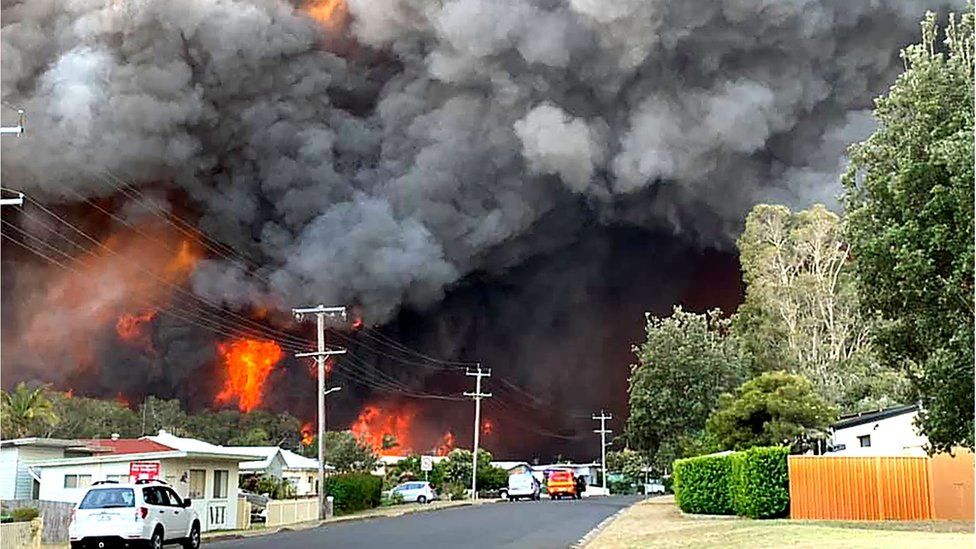BAL Report Basics: Crucial Information for Homeowner
BAL Report Basics: Crucial Information for Homeowner
Blog Article
Importance of BAL Report in Ensuring Bush Fire Protection
In the realm of bushfire protection, the importance of a Bushfire Strike Level (BAL) report can not be overstated. This important document functions as a foundational tool in analyzing the potential danger a property may encounter throughout a bushfire and plays a crucial duty in establishing the needed protective procedures to secure lives and properties (BAL Report). The true worth of a BAL report expands beyond a plain analysis; it acts as a directing light for residential property proprietors and authorities alike, using insights right into improving building durability and ensuring reliable fire defense.
Understanding Bushfire Attack Levels
The comprehension of Bushfire Assault Degrees is crucial for evaluating the possible danger and impact of bushfires on a property. Bushfire Strike Degrees (BAL) are a means of measuring the intensity of a building's prospective direct exposure to ember strike, glowing warmth, and direct fire get in touch with in a bushfire. Understanding the different BAL classifications is necessary for homeowner, engineers, and building contractors in developing and building buildings that are more resilient to bushfires.
By understanding these levels, property proprietors can make informed choices about bushfire security steps, such as setting up coal guards, using fireproof structure materials, and preserving clear defensible space around the property (BAL Report). On the whole, a detailed understanding of Bushfire Attack Levels is crucial for efficient bushfire preparation and security.
Analyzing Property Danger Levels
After recognizing the ramifications of Bushfire Assault Levels, the next essential step is examining the risk levels connected with specific properties. Evaluating residential or commercial property risk levels entails a detailed assessment of numerous aspects that can affect the vulnerability of a home to bushfires. These variables include the distance of the residential or commercial property to bushland or plant life, the type and condition of surrounding plant life, the incline and aspect of the land, dominating climate problems, and the existence of combustible products near the home.
Property danger analyses are vital in identifying the level of bushfire security steps that require to be implemented to safeguard the residential or commercial property and its passengers. By precisely evaluating the risk levels, building owners can make informed decisions pertaining to bushfire prevention approaches, such as vegetation monitoring, building layout adjustments, and the installation of fireproof products. Furthermore, home danger evaluations play an important duty in the growth of emergency feedback strategies and emptying procedures in case of a bushfire.
Executing Safety Steps
Upon completing residential property threat evaluations, the following essential phase involves the implementation of protective actions to enhance bushfire defense. Applying safety steps is crucial for securing residential properties and making certain the security of people throughout bushfire occasions.
Regular maintenance of safety steps is similarly essential to guarantee their effectiveness during a bushfire. This consists of frequently evaluating and repairing ash guards, performing plants management to decrease fuel lots, and testing firefighting tools such as pumps and hoses. By diligently executing and keeping these safety actions, home owners can substantially increase their strength to bushfires and decrease prospective damage and loss.

Enhancing Property Strength
Enhancing residential or commercial property resilience versus bushfires depends upon the positive execution and upkeep of protective steps targeted at fortifying defenses and lessening prospective threats. Homeowner can improve resilience by producing and maintaining defensible rooms around their properties. This consists of frequently removing completely dry greenery, preserving a well-irrigated yard, and having a strategic layout their explanation that reduces the risk of fire spread. Furthermore, setting up coal guards on vents and windows, making use of fireproof structure products, and making sure proper upkeep of roof coverings and rain gutters can considerably enhance a residential property's capacity to endure a bushfire.
Residential property owners need to develop and practice a bushfire emergency plan, conduct normal fire drills, and guarantee all locals recognize have a peek at this website just how to respond in situation of a bushfire. By taking proactive measures, residential property proprietors can substantially boost the durability of their buildings against the risk of bushfires.

Making Certain Efficient Fire Security
Implementing durable fire security measures is necessary for protecting buildings versus the terrible effect of bushfires. Additionally, installing fireproof materials on the property, such as fire-resistant roof covering and ember-proof screens on home windows, can substantially lower the threat of fire damages.
Additionally, having an emergency feedback plan in area is important for guaranteeing reliable fire protection. This plan ought to describe evacuation treatments, communication protocols, and assigned conference factors for homeowners. Normal training and drills should also be performed to ensure that all homeowners are prepared to react promptly and safely in the event of a bushfire.
Conclusion
In final thought, the BAL record plays a critical role in guaranteeing reliable bushfire defense by analyzing building threat degrees, applying protective procedures, and boosting home resilience. Recognizing Bushfire Strike Levels is important in figuring out the level of risk a property faces throughout a bushfire.
By understanding these levels, building owners can make informed decisions concerning bushfire protection actions, such as setting up coal guards, making use of fireproof structure products, and preserving clear defensible room around the property. Assessing residential or commercial property risk levels other includes a comprehensive examination of various aspects that can influence the sensitivity of a residential or commercial property to bushfires.Building threat analyses are important in determining the degree of bushfire defense procedures that require to be executed to safeguard the residential or commercial property and its occupants. By taking aggressive procedures, residential or commercial property owners can considerably increase the resilience of their properties against the threat of bushfires.
In verdict, the BAL report plays a critical role in making certain efficient bushfire protection by analyzing residential or commercial property threat levels, executing safety procedures, and improving residential or commercial property resilience. (BAL Report)
Report this page